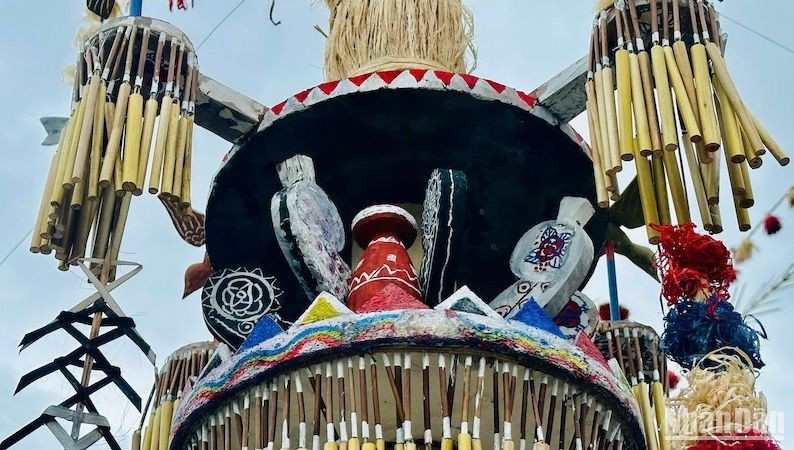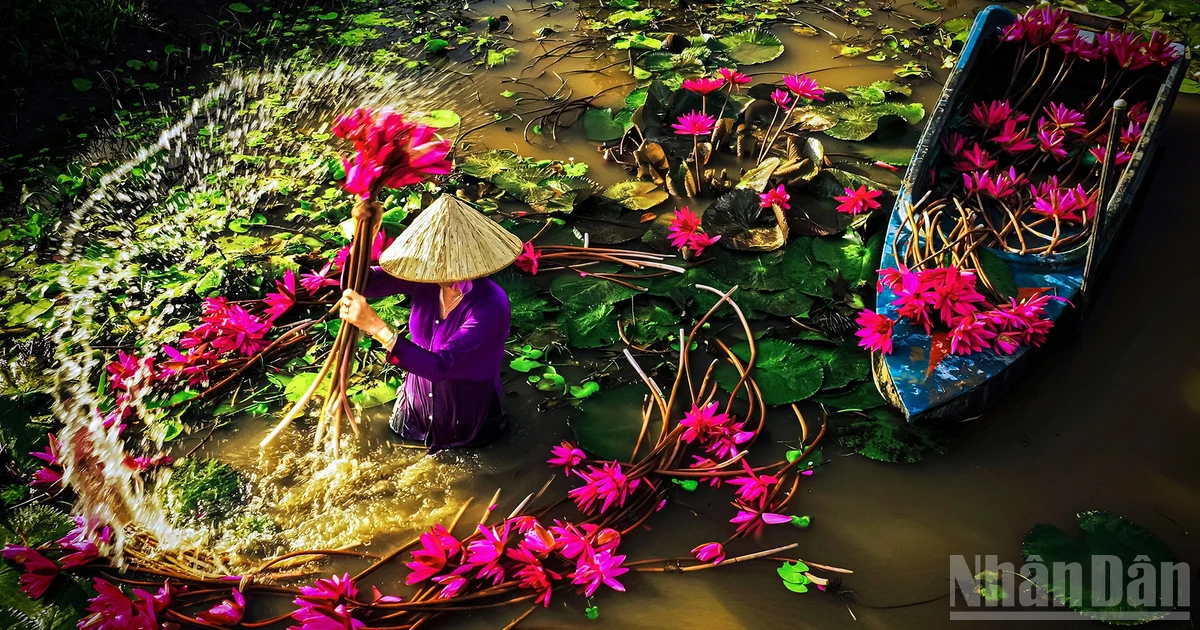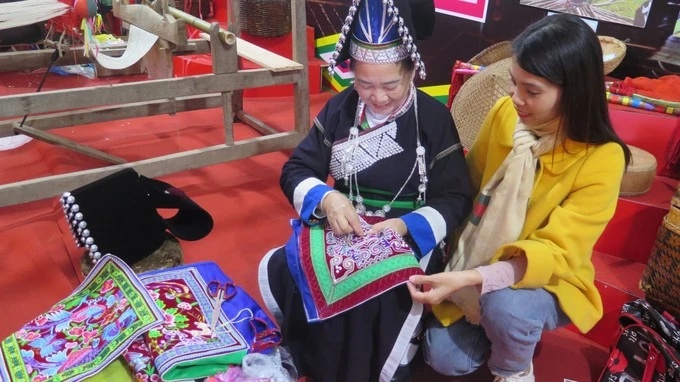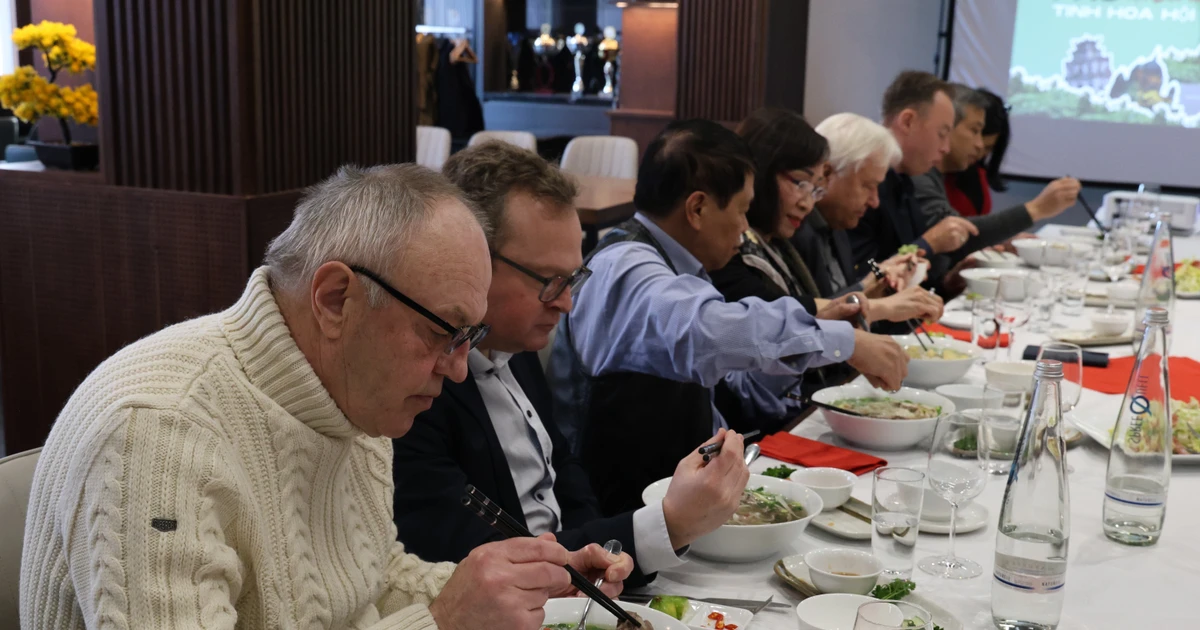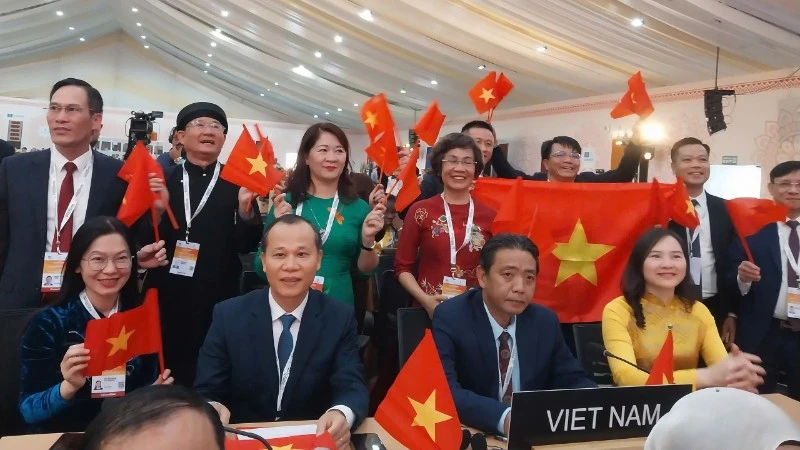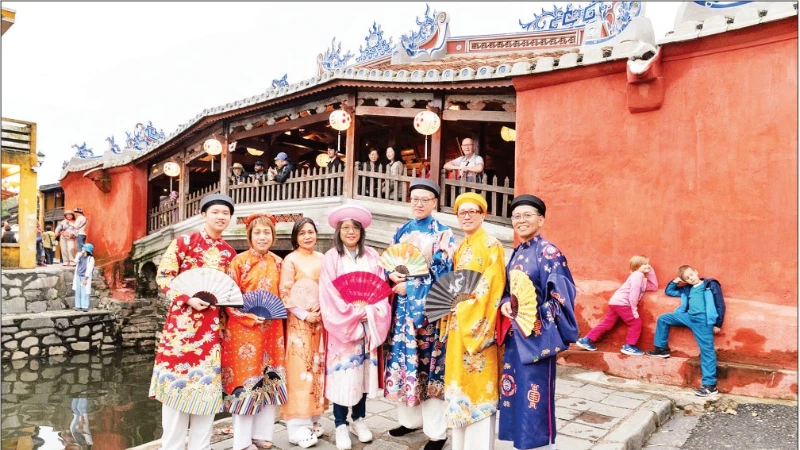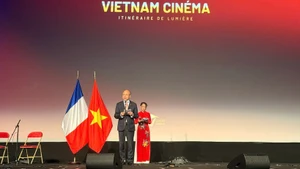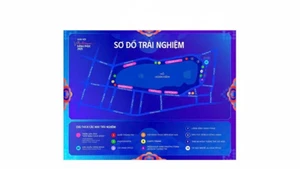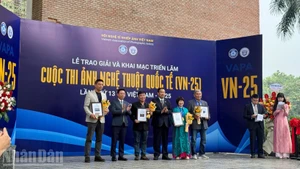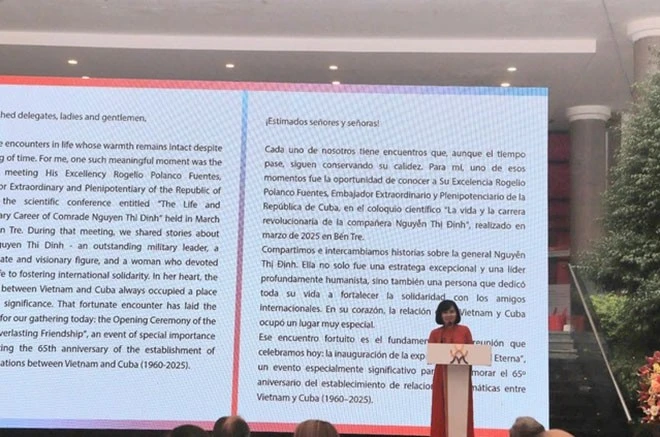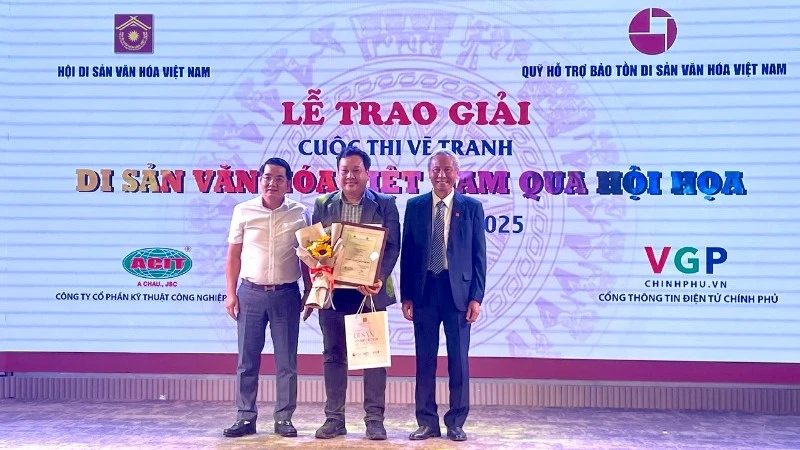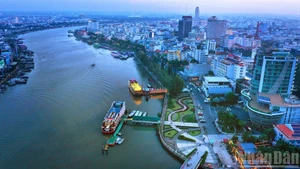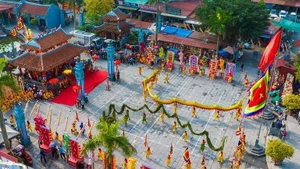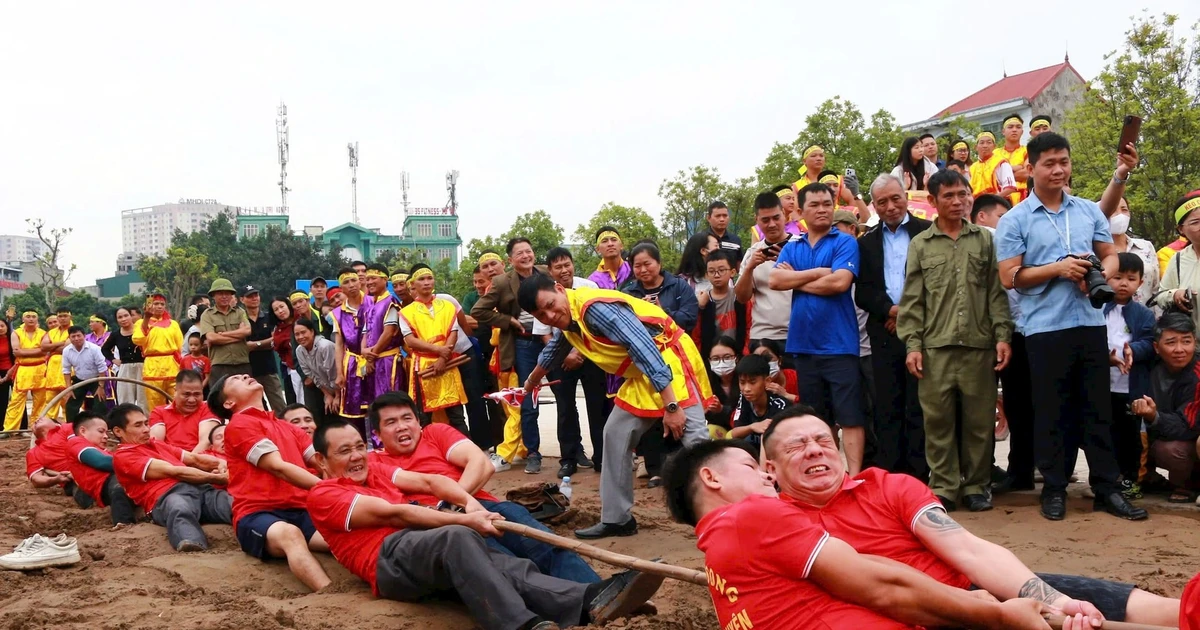The pole (neu tree), along with the gu set during the buffalo-sacrificing festival, are highlights in the decorative and visual arts of the Co people, a quintessence of the folk visual arts of the vast Truong Son-Tay Nguyen region.
Tra Bong district in Quang Ngai Province is home to more than 32,800 Co people, accounting for 60.8% of the population, primarily residing in 13 upland communes. The Co people’s pole has many different forms, each region has its own characteristics. The main pole is usually made from cho trees, while the upper section and branches are fashioned from bamboo, rattan, tree bark, and put sticks suspended from the gu’s side arms.
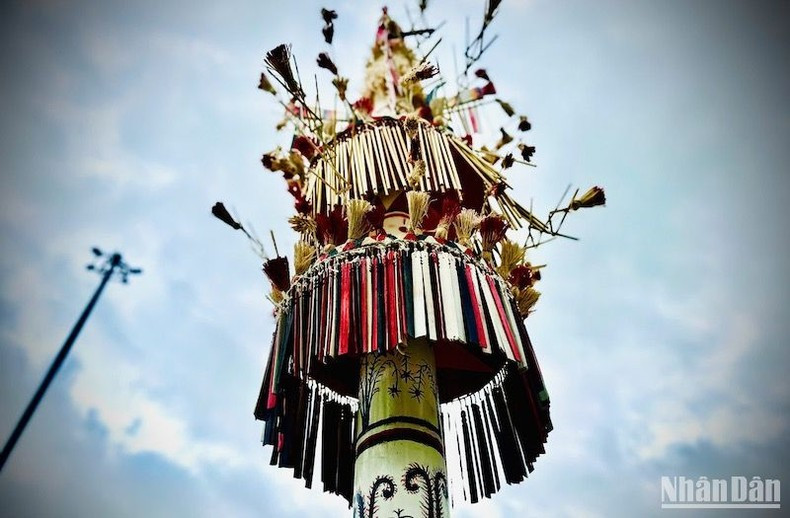 |
| The main pole is usually made from cho trees, while the upper section and branches are fashioned from bamboo, rattan and tree bark |
The pole is hung with the drongo bird (chim cheo beo), which are also mounted at the top of the pole. In Co beliefs, the drongo is a sacred creature sent by deities to help them protect the rice crops by eating harmful insects such as grasshoppers and caterpillars. As such, the Co people never hunt or eat this bird.
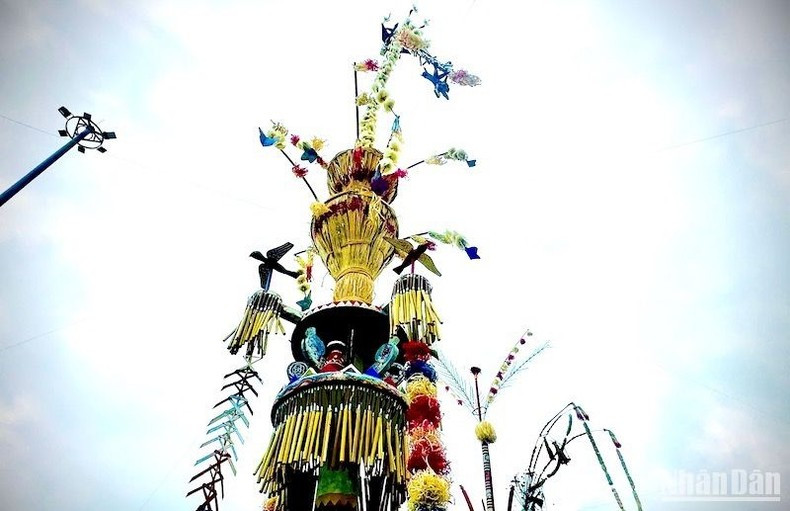 |
| Decorative drongos placed at the top and around the pole form a distinctive visual hallmark of the Co community in the mountainous Tra Bong region. |
Another important object is the nai trau (a woven rope used to telpher the buffalo) aims to ensure safety during the sacrifice. It is meticulously crafted, with elaborate patterns considered a unique weaving technique of the Co people, distinct from other ethnic groups in the Truong Son – Central Highlands area.
Decorating the cây nêu is a communal task undertaken by skilled artisans, drawing on a long-standing tradition associated with sacrificial buffalo rituals to honour the gods.
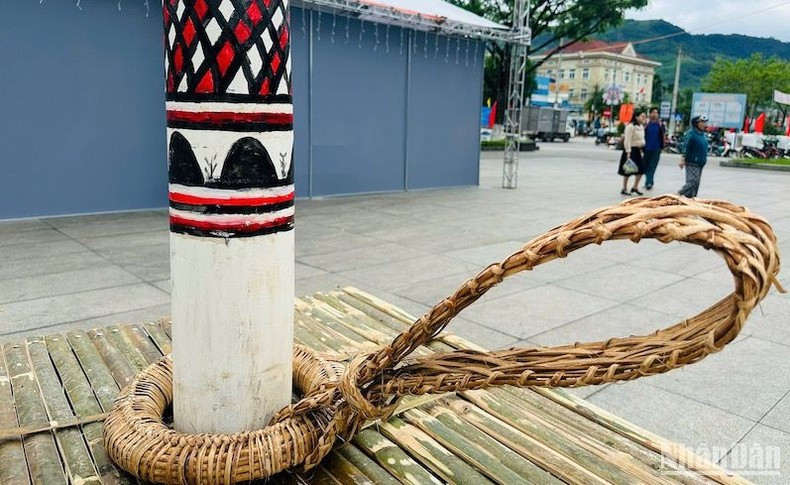 |
| The nai trau is meticulously crafted, with elaborate patterns |
Decorating the pole is a task undertaken by skilled artisans, with many years of experience, expressing the beauty of the long-standing customs of the Co people in the ritual of worshiping the gods with buffalo sacrifice.
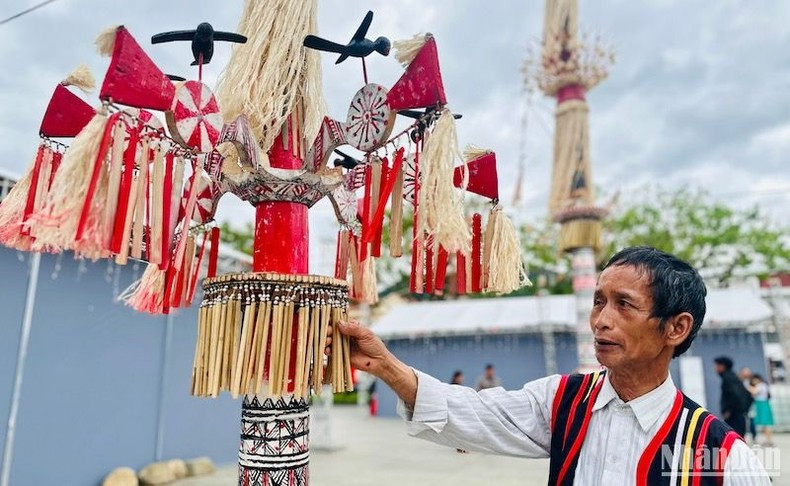 |
| According to artisan Ho Van De from Tra Phong commune, “The pole used in ancestral worship is decorated in three symbolic colours: black represents the earth, white symbolises the sky, and red signifies fire.” |
The art of decorating the pole in the buffalo sacrifice festival of the Co ethnic group originated from the development history of the Co community. These poles are closely associated with festivals involving buffalo sacrifices, ancestral worship, and prayers for peace and blessings. “To the Co, creating visual forms isn’t just about aesthetics — it’s a way to convey prayers to the gods, hoping for their protection and a better life,” explained Thanh Hoa, a local official from Tra Bui commune.
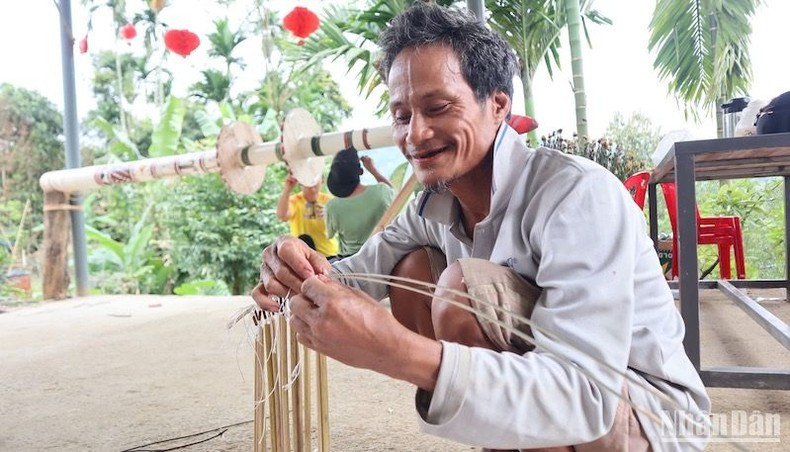 |
| An artisan decoratea the pole |
Through vivid and expressive carvings, Co artisans can depict the essence of animals and nature with just a few strokes—from tigers and elephants to cho trees, cinnamon, rice plants and millet. Everyday scenes such as collecting honey, buffalo rituals and harvest celebrations are all captured in their art.
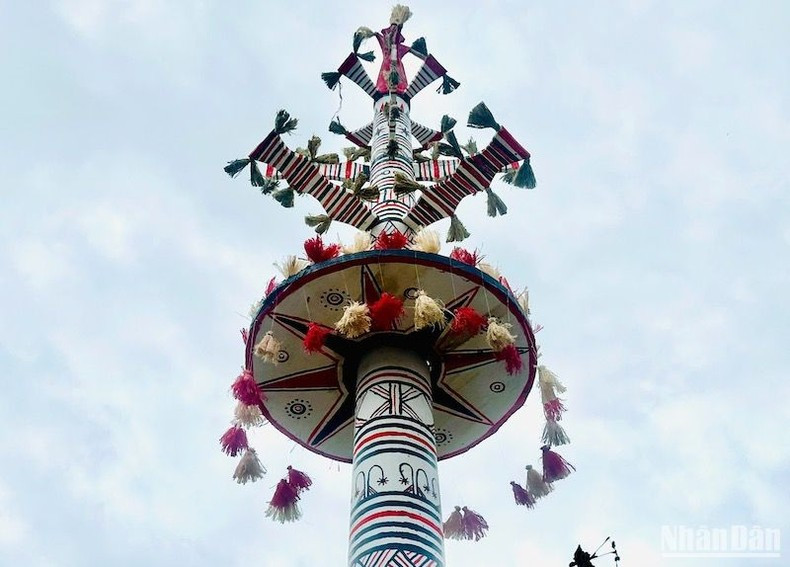 |
| The decorative motifs on different types of pole are impressively diverse and symbolic. |
The Co’s sculptural tradition bears strong traces of primitive art, showcasing a refined aesthetic sense, skilled hands, and seemingly boundless creative vision. The pole erected during the buffalo sacrifice festival is also linked to the ca-dao dance, performed in the sacred cultural space of the forested highlands. The rich and diverse natural environment also makes the art of decorating the pole richer. Aesthetic sense is always present in the life of the Co people following the flow of culture and history.
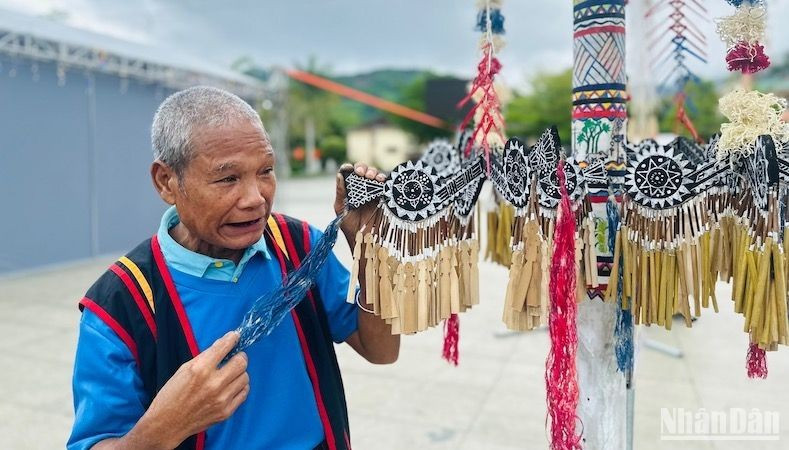 |
| Over time, the number of artisans capable of creating these traditional poles has dwindled. |
Today, the intangible cultural heritage of pole decoration is being passed down within the Co community, helping to preserve and promote the uniqueness of this heritage both nationally and internationally. Artisans continue to dedicate their talents, creativity, and passion to sustaining this traditional folk art and spreading its value within modern cultural life.
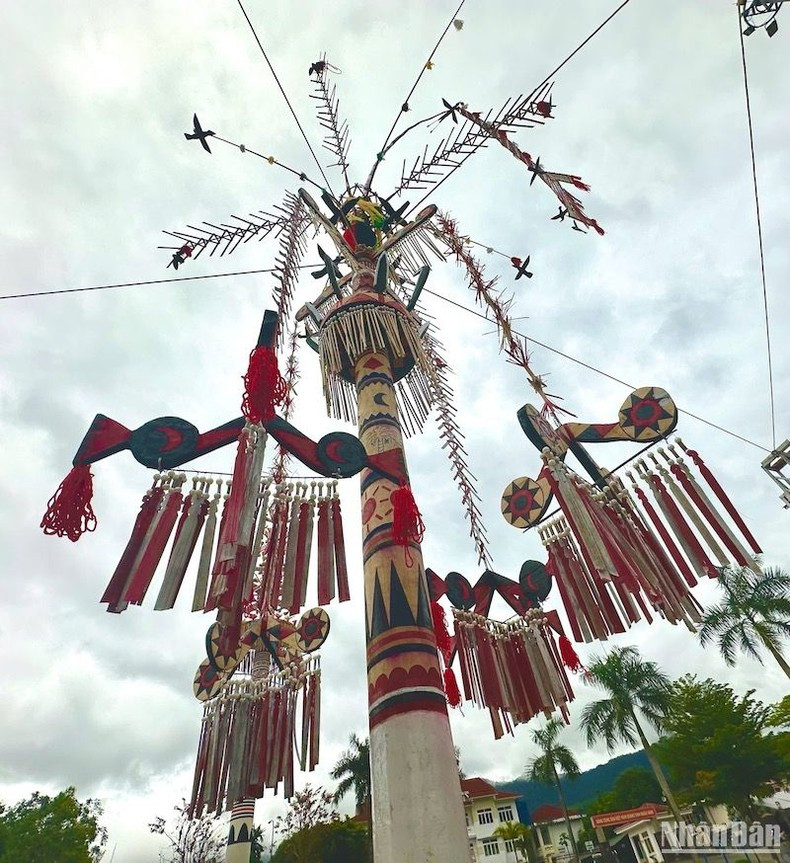 |
| The decorative art of the pole is distinguished by its uniqueness compared to many other ethnic groups across the Truong Son – Central Highlands. |
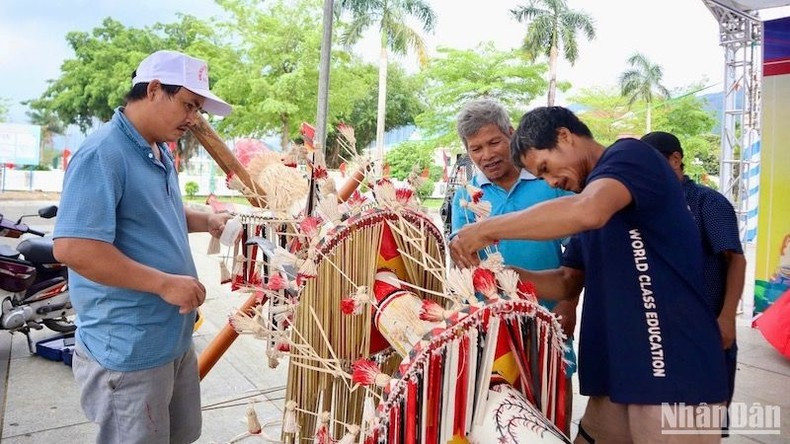 |
| Artists actively create and are passionate about traditional folk art to spread unique cultural values. |
